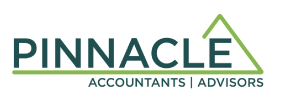
Purchase of shares of a professional corporation

There are a number of ways to structure a purchase of shares, but in this blog I will discuss three options:
- Purchase the shares of the practice as an individual;
- Purchase the shares of the practice using a holding company;
- Purchase the shares of the practice using a temporary purchase corporation with an immediate subsequent amalgamation.
Option 1 – Individual
The first option is the simplest. You can pay the owner of the practice for his or her shares and hold these shares in your personal name, thus owning the corporation yourself.
Pro: If you borrow money to fund the purchase, you can write off the interest on your personal tax return.
Pro: You may have the ability to use your lifetime capital gains exemption to shield up to $800,000 of capital gain if you sell the shares in the future.
Con: If you borrow to fund the purchase, you will be paying back the debt principal with personal after-tax dollars, meaning you will first have to withdraw this money from the corporation and pay a high rate of tax on it.
Con: There are limitations on income-splitting depending on professional association rules.
Option 2 – Holding company
The second option is to incorporate a holding company to purchase and hold the shares of the professional practice.
Pro: If you borrow to fund the purchase, you can pay back the debt principal with after-tax corporate dollars – much cheaper than paying it back with after-tax personal dollars.
Con: If you hold the shares of the professional practice in a holding corporation, you lose the ability to claim the lifetime capital gains exemption on a future sale of the shares – this can only be claimed by individuals.
Con: The holding company likely has no income against which to write off the interest expense if you borrow to fund the purchase.
Con: Higher legal and accounting fees to manage two corporations.
Option 3: Temporary purchase corporation
The third option is much like Option 2 in that you would incorporate a new company and use this company to purchase the shares of the professional practice. However, immediately after purchasing the shares, the new company and the professional corporation would become one company, through an amalgamation. This leaves you as the sole shareholder of the corporation, which is the same result as Option 1.
Pro: If you borrow to fund the purchase, the interest can be written off in the amalgamated professional corporation.
Pro: If you borrow to fund the purchase, you can pay back the debt principal with after-tax corporate dollars – much cheaper than paying it back with after-tax personal dollars.
Pro: You maintain the ability to use your lifetime capital gains exemption.
Pro: Although up-front legal and accounting costs will be higher than Option 1, there is less ongoing maintenance than Option 2 due to the subsequent combination of the two corporations.
Con: Loss of adjusted cost base of the practice on amalgamation unless there are non-depreciable assets in the corporation which can absorb the cost base. The loss of the cost base should easily be offset by the benefit of paying back the debt principal with after-tax corporate dollars.
Con: Potential transfer taxes on amalgamation if certain types of assets exist.
Other issues
- If there are real estate or other passive assets in the practice you are considering buying, it may complicate the transaction.
- You should be sure to determine the balance of your remaining lifetime capital gains exemption.
- There may be limitations on share ownership in a professional practice, depending on your professional association’s rules.
If you are considering purchasing a professional practice, come and see one of our qualified CPA, CA designated practitioners first. We are happy to help and we love what we do.
